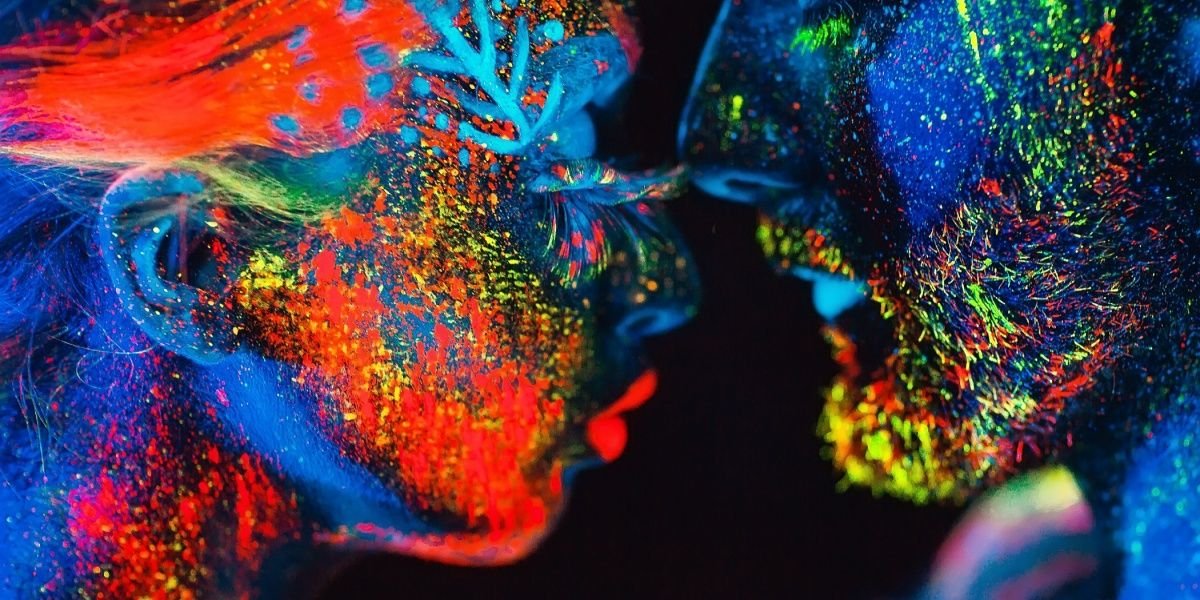Polysubstance use is a term used to describe consuming a combination of drugs and or alcohol in a single session. It is a prevalent and dangerous practice that is linked with substance use disorder and overdose.
This guide discusses the signs, statistics, and effects of different combinations, such as mixing drugs with alcohol, prescription medicine, or both.
- Polysubstance abuse has become increasingly common among young people.
- Combining substances potentiate each one’s effects, decreasing the body’s metabolization ability.
- Negative effects include heart strain, brain damage, and organ failure.
- Polysubstance abuse treatment includes inpatient and outpatient care, psychotherapy, and support groups.

Understanding polysubstance use
Polysubstance use, or polydrug use, refers to the use of two or more legal or illicit substances simultaneously. Examples of polysubstance use include combining illegal drugs, such as mixing cocaine with heroin (slang = "speedballing") or mixing LSD with MDMA (candyflipping).
It can also involve using legal substances in combination with one another, such as alcohol, OTC medication, or prescription medicine.[1]
Polysubstance use is often an indicator of a larger substance use problem and may well suggest dependence or polysubstance use disorder (PUD). It can also be a SUD of its own, with some people not being able to live normal lives without using select substances in combination with each other.[1]
Signs of polysubstance use disorder
- Inability to stop despite physical, interpersonal, financial, or legal issues.
- Taking prescription medicine for a different purpose than it is medically intended, such as taking opioids to create euphoria.
- Taking prescribed medication for longer than recommended or without medical advice.
- Strong urge to take the drugs at any time of day.
- Increased tolerance to substances, observing fewer effects after consuming the same quantity over time.
- Withdrawal symptoms, which range in severity when consumption is halted or interrupted.[1]
Polysubstance abuse statistics
A 2020 study on modeling polysubstance use revealed that:
- 35 million people have a substance use disorder, abusing one illicit or legal drug.
- 11.3% of these individuals consume alcohol or another illegal drug.
- Individuals with alcohol use disorder are two times more likely to develop a heroin addiction.
- Marijuana users are three times more likely to develop heroin addiction.
- Cocaine users are 15 times more likely to become addicted to heroin.
- Prescription misusers are 40 times more likely to develop a heroin dependency.
- People with drug addictions use an average of 3.5 substances.
- 74% of cocaine and 80% of amphetamine users have a polysubstance abuse history.
- The incidence of simultaneous cocaine and alcohol use ranges from 24 to 98%, while the incidence of concurrent cannabis use ranges is 12-76%.
- When combining an illicit drug with nicotine, the rate of concurrent use is 70-80% for cocaine and nicotine and 85-95% for amphetamine and nicotine.
- People with nicotine use disorder are 3-4 times more likely to have another substance use disorder.
- Amphetamine users are 21 times more likely to be simultaneously cocaine-addicted and 7 times more likely to have used cocaine during the past year than non-amphetamine users.
- People who abuse prescribed medicine, specifically opioids, are 19x more likely to try heroin.
- Over 33% of cocaine and 20% of methamphetamine users are also prescription opioid misusers.
- 91% of individuals treated for heroin abuse have also become addicted to cocaine.
- 80% of death-inducing opioid overdoses are part of polysubstance use. 78% of these deaths entailed simultaneous opioid consumption, and 21.6% had concurrent cocaine consumption.
- 27.5% of adolescent cannabis users admit to consuming another drug together with cannabis. In comparison, 67% admitted to taking at least two other illicit drugs with cannabis.
- 21% of ED visits for people aged 12-24 years involved polysubstance abuse, specifically illegal drugs and alcohol.[2]
Risks of polysubstance use
Polysubstance use has multiple negative consequences because the chemical interactions between these substances amplify their effects.
Mixing stimulants such as amphetamines, cocaine, ecstasy, or methamphetamines stimulates individuals’ nervous systems, increasing their heart rates and blood pressure. This dangerous increase may lead to:
- Stroke.
- Heart attacks.
- Brain injury.
- Liver damage.[3]
Depressants like morphine, benzodiazepines, heroin, and oxycodone are primarily known for their calming effects. These drugs pose different, albeit severe, consequences. Taking these depressants and sedatives concurrently or abusing them leads to slow breathing and heartbeat.
The most dangerous effects include:
- Brain damage.
- Organ damage.
- Death.[3]
Mixing drugs and alcohol
Mixing drugs and alcohol has a high prevalence, though potentially life-threatening consequences.
Alcohol decreases the stimulating effect of the GABA (gamma-aminobutyric acid) neurotransmitter. This is the main inhibitor of the central nervous system. As such, alcohol is a depressant that slows down individuals’ central nervous systems.[4]
This leads to increased drowsiness, though preceded by a short period of euphoria caused by an initial dopamine spike.[5]
Large amounts of alcohol depress the central nervous system and inhibit dopamine production, leading to confusion, sluggishness, and lack of coordination. [5]
Mixing alcohol with depressants like Xanax or other benzodiazepines augments their depressive effect. The results are plummeting heart rate, blood pressure, and breathing, which may result in rapid loss of consciousness.
Parasomnias, such as sleep-driving, are also common after taking alcohol concurrently with prescribed sedatives or other depressant substances.[6]
Mixing alcohol with stimulants is erroneously thought to fight the drowsiness-inducing effects of alcohol. However, the negative effects of these drugs are hidden, so individuals will not observe or take charge.
Effects include:
- Increased blood pressure, heart rate, and overall cardiac stress, leading to heart attacks.
- Insufficient blood flow to the brain and vital organs, leading to brain and organ damage.
- Sudden death.[4]
Polysubstance use and prescription drugs
Prescription drugs are common in polysubstance abuse because they are widely available and perceived as safer than illicit drugs.
However, combining prescription medicine with other prescription drugs, alcohol, or illicit substances leads to life-threatening consequences.
The long-term result is a tolerance increase, meaning individuals need increased doses of prescribed meds to feel the same effects. In the long run, this leads to intoxication and overdose.
Short-term results vary depending on the substances people with PUD mix.
For example, the cocktail of alcohol and benzodiazepines or opioids enhances the sedative effect. This leads to respiratory depression, plummeting heart rate, dizziness, and confusion.[7]
Mixing prescription medicine with nervous system stimulants such as cocaine, heroin, or methamphetamines may induce a rapid heart rate and accelerated breathing. These physical manifestations lead to heart attack, stroke, and respiratory failure.[8]
Reasons people use multiple substances at once
There are many reasons someone may use more than one substance at a time. For some, it is because they like the way the substances combine to create a new effect. For example, when cocaine and alcohol are combined, they create a new compound in the liver called cocaethylene.[11]
Cocaethylene can heighten the effects of both cocaine and alcohol, meaning people can feel drunk yet maintain coordination that is often impaired through drinking. It also stays in the system for longer than cocaine or alcohol alone, so the effects last longer.[11]
Cocaethylene is the only known instance of a new psychoactive substance being created through combining drugs and/or alcohol. However, how different substances affect the body on their own and in relation to each other can be appealing enough for drug users.
Certain situations or contexts also often lead to or necessitate polysubstance use. This can include rave and club culture, festivals, medicinal and holistic management of pain relief, and sexual experiences, such as chemsex.
Polysubstance use and overdose
Polysubstance abuse overwhelms the body, which becomes unable to metabolize this mix of chemicals safely.
Studies show that individuals using opioids and stimulants concurrently had over twice the risk of fatally overdosing compared to those only taking opioids.
The interactions between these chemicals and the increased drug quantity amplify this poisonous effect, leading to overdose.[9]
The medical complications include:
- Respiratory depression.
- Seizures.
- Heart failure.
- Loss of consciousness.
- Brain and organ damage.
Getting treatment for polysubstance abuse
Polysubstance use disorder treatment may include:
- Inpatient rehabilitation, with 24/7 specialized care at a treatment center.
- Outpatient rehabilitation, with at-home care and participation in certain individual and group programs to manage symptoms.
- Addiction treatment medication for opioid-use disorders like methadone, buprenorphine, and naltrexone.[10]
- Individual therapy to resolve the psychological issues contributing to PUD and identify triggers.
- Support groups and 12-step programs offer peer support to polysubstance users.




